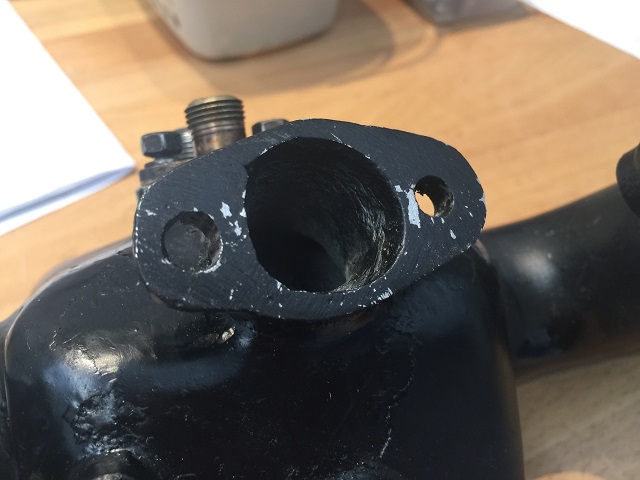| Author | Message | ||
John Rowney Experienced User Username: johnrowney Post Number: 28 Registered: 2-2015 |
My 1938 Wraith WXA68 had a coolant leak. Investigation showed that there was corrosion in the coolant jacket in the inlet manifold at the return to the cylinder head. This is now being welded up. This appears to be due to electrolysis since the manifold is aluminium and the head is iron. Does anyone have a similar experience and are there any suggestions for prevention or retardation of this corrosion. Perhaps since WXA68 is having her 80th birthday this year, this isn't too bad. John Rowney  | ||
Larry Kavanagh Prolific User Username: shadow_11 Post Number: 140 Registered: 5-2016 |
Hi John, Evans Waterless Coolant claim that their coolant reduces the risk of hydrolysis damage, whether or not that statement is true is a matter that I can't confirm or dispute as I have not used their product. Perhaps you're already aware of Evans Waterless Coolant but if not you can google it and have a read of their product claims and decide for yourself. It's expensive stuff but lasts indefinitely which probably saves money in the longer term. | ||
christopher carnley Unregistered guest Posted From: 86.164.119.6 |
It is a common problem with all the Derby cars, lack of corrosion inhibitor is the reason. Put plenty of Bluecol/Prestone in the water. (Message approved by david_gore) | ||
John Rowney Experienced User Username: johnrowney Post Number: 29 Registered: 2-2015 |
I looked at both Evans Waterless Coolant and Penrite Classic Car Coolant. The Penrite material is water based and has no anti-freeze or anti-boil properties. The waterless coolant has both, but it would normally run hotter than a water based coolant. I chose the Evans Waterless Coolant, mainly to see how it would go. I had two guys weld the hole up. The first guy welded up the hole, but he would not add any more metal to bring it back to its original size. The flange was also not aligned with the other 4 flange faces and there was a gap of 0.6 to 1.2 mm at the hot spot flange when manifold was put on a flat bed. I installed the manifold despite this gap, using lots of gasket goo and a shaped metal spacer. However this was unsuccessful either due to my failure to allow the gasket goo to cure properly, or not enough gasket goo.  The second aluminium welder was far more skilled and increased the height of the flange face and reduced the diameter of the internal hole in the flange face.  I then had the faces of the flanges machined by a cylinder head specialist and the flange faces were on the same plane.  I installed the manifold and after some tuning issues WXA68 was running well with no coolant leaks. The vehicle now seems to run between 1 and 4 deg C hotter than before, which could be expected. The real trial will be when I drive WXA68 from the Gold Coast to Clare, South Australia for the RROCA National Rally in April. . |